Email is the great equalizer in marketing.
Everyone expects to get an email from you at some point, so there is no reason not to send one.
And for the most part, email engagement is relatively high compared to other forms of communication. The average open rate is 21.73%.
So someone somewhere is going to read whatever you send.
But the real question still: will email subscribers convert?
Email has an average ROI of 122%. But not every email you send will see that level of return.
Some emails just work better than others when it comes to driving conversions and sales.
What do I mean, exactly?
Here are a few examples of emails you should send if you really want to see that ROI.
1. The case study email
Case studies are one of the most effective types of content.
At least according to 89% of marketers.
The reason they work so well for sales is that they build trust. They’re social proof.
People can see that you have gotten measurable results for other customers in their industry, and they want in on the action.
But the trouble with case studies is that people don’t always seek them out.
The average person spends less than a minute on any given website. If your bounce rates are higher than that for whatever reason, that time could be less.
Some sites put case studies on their landing pages, which can be great for site conversions.
HubSpot, for example, lists case studies in the dropdown menu under “Software.”
But if you were just scrolling the homepage without looking at the dropdowns, you might miss it.
By sending them in an email, however, they’re much harder to miss. You’re putting your best social proof front-and-center.
HubSpot even recommends putting them in your email-marketing campaigns.
Andrew Warner from Mixergy has a great example of one of the case-study emails he sends. You can read the whole thing here.
Case studies don’t have to be long or complex. They just have to showcase how someone benefited using your product or service.
A testimonial email works just as well as a full-blown study in some cases.
You can take an existing case study and send an email with a link or put the full study in the email itself.
Try mixing up your case studies or testimonials between long and short-form, videos, text, images, and other forms of media.
Just remember to link it back to something actionable, so there’s an actual conversion.
Include a strong CTA that either links back to your site or includes an offer of some kind. The more actionable it is, the better it will be for sales.
2. The Q&A email
Customers will always have questions.
That’s why I recommend sending Q&A emails. No matter how detailed your service offering is on your website, people will always want to know more.
Now, I know what you might be thinking.
Neil, we already answer most of our customer questions on our website. Why do we need to send another email?
The problem goes back to what I said earlier – people don’t spend as much time browsing your site as you think they do.
Even if you had an entire forum of FAQs, most people wouldn’t spend the time looking through them to find the answers they want.
They would most likely just email you directly or use a search engine because it’s faster.
Business owner Marcus Sheridan explained this pretty well in an interview with the New York Times on why he sends Q&A emails:
“The problem in my industry, and a lot of industries, is you don’t get a lot of great search results because most businesses don’t want to give answers; they want to talk about their company.”
He realized that answering customer questions directly in an email helped him sell customers on the value of his business without having to brag.
There are a couple of ways you can approach the Q&A email.
You can either ask (and answer) some questions yourself, like Lauren McLeod from FlightFox does:
Or simply ask people to reply to your email with more questions, like Canva does:
This type of email not only shows off your expertise, but it’s also genuinely helpful.
If you do link it back to your site, you can also drive more traffic and (hopefully) engagement there as well.
But, ultimately, people are getting their questions answered about your brand.
That’s what really matters in the long run.
3. The “How To” email
Welcome emails are great. You probably get them all the time.
It’s a way of saying, “Hey, we see you! Thanks for signing up.”
While it’s a friendly gesture, and an email you should definitely send, you can go the extra mile toward a conversion by providing a stronger CTA.
That’s where the “how to” part comes in.
Instead of just saying “hi,” why not show them exactly how they can get started with you?
Go into detail about how they can setup an account, what they should do next, or how to find you on social media.
It could be something short and sweet, like this welcome email from Sincerely:
Or something more robust, like this getting-started email from Airbnb:
The goal is to create something more actionable for the customer.
Another way you can use the “how to” email is to include explainer videos (or articles).
A video in an email will increase the click-through rate by 96%. That’s only 4% away from having everyone click!
Wistia, for example, uses how-to videos to highlight new features.
This can be useful if you have a specific product demo or new features you wanted to showcase, either in a welcome email or a separate campaign.
The point is to give some additional value to your email recipients.
If they know you give them information they can use, they will be more likely to open your emails when they see them and buy into your offerings.
4. The social media email
Email and landing pages are not the only ways to sell to customers.
Social media has been shown to improve sales at every point in the funnel.
Pinterest and Instagram even have buy buttons for bottom-of-the-funnel leads.
In fact, 93% of Pinterest users use the platform to plan or make purchases, and the platform drives 25% of all retail sales worldwide.
In March of 2017 alone, more than 120 Instagram subscribers used the platform to engage with businesses in some way.
What should this tell you?
Your emails don’t have to point back to only your website.
You can point them to your social media pages, too.
Sending out social media emails also has the benefit of driving brand awareness for those who aren’t yet subscribed.
92% of consumers trust referrals from friends on social media and are 4x more likely to buy from a brand that’s referred to them on social channels.
Here’s another great example from Bed, Bath and Beyond:
I like the humor.
It’s cute. It’s funny. It gets the point across.
You can also create something short and sweet like this one from HotelsPro:
It has a clean design that really makes you want to click those images.
I also like how it includes their social-sharing buttons.
While it might seem excessive to have both, it gives people more choices to connect.
Most email-marketing solutions have tools and integration to make it easy to add social-sharing buttons to your emails.
You can also add social counters, reviews, and ratings with plugins.
But sending out a separate email that purposefully highlights your social channels can improve engagement and, ultimately, sales.
They are also really easy automated emails to create.
So it’s a win-win for everyone involved.
5. The free offer email
Lots of brands will send you discounts if you subscribe to their emails.
Offers like this work for both engagement and sales.
But you know what people love more than a discount?
They love free things.
While it may seem counterproductive to offer something for free if you’re trying to boost your revenue, studies show that free trials and offers can improve sales by 75%.
Customers tend to stay signed on even after their freebie has run its course.
A free offer could include a free sample of a product or a free-trial offer.
But you don’t always have to offer a free trial if you don’t want to.
There are other ways you can give something for little-to-no cost and still see sales.
Take this example from Slides:
They offer a free pack of design resources instead of a free trial or product.
It works more like a lead magnet, really.
This is smart because it shows off what you can do with their service and it’s non-committal.
If you like it, you can buy more from them later on.
If you don’t like it, you still have a valuable resource from this company that you can recommend.
They also do a good job of adding in subtle share buttons just in case you do want to recommend it to your friends.
Here’s another example of a free offer from Zapier:
This is a free training session for automating brand monitoring using Zapier’s services.
Depending on the sales pitch they use during the webinar, they could potentially get a lot of signups from this offer.
While it’s “free,” there’s value there that goes beyond a dollar amount.
There is real engagement and participation.
They get to see Zapier in action, which is all the more reason just to use Zapier.
You can also combine this idea of a free offer with a social email or some type of referral program.
Take this example from AirBound:
Two months free? Where do I sign up?
There’s social proof, a free offer, and incentive to sign up for an AirBound account.
That’s a lot of motivation to work with.
It combines the best of both worlds (both worlds being social sharing and free offers) to create something truly compelling.
It’s a great strategy for marketers that want to give something for free but are still concerned about sales figures.
6. The curated content email
Every week, my friend Hiten Shah sends a roundup of his favorite posts to his email subscribers.
He delivers a lot of great curated content on topics like marketing and sales.
Content curation helps your marketing in a lot of ways.
It can boost your brand’s visibility and engagement, create a positive impact on your SEO, establish trust, and build relationships with your customers.
Curation is part of a marketing strategy that PublishThis calls “Big Content:”
The idea is that while personalized email marketing can help with conversions, curated content can actually turn your brand into a thought leader.
People want to buy from you because you’re kind of a big deal.
Take this example from social-engagement brand Sprout Social:
They send out regular insights into the industry, how marketers can use social media to grow their business, and how Sprout Social fits into that picture.
By doing this, they are becoming the expert on social media for their followers.
With curation, you’re not just building a subscribers list. You are creating “pre-qualified” subscribers.
Basically, they learn about your product through an influx of knowledge, not a sales pitch.
They are more likely to buy when push comes to shove because they know the value of your brand.
Take a look at this example from marketer Jay Baer:
His curated content is highly informative and actionable.
Curation emails are a great way to build a loyal following and improve engagement while simultaneously improving your overall reputation in the industry.
You become a brand that’s actually worth buying from.
There are plenty of tools out there that can help you create curated content from your blog or from around the Web.
Pocket is a great one if you’re already in the habit of accruing content and saving it for later.
I sometimes come across useful articles when I’m writing my content which I like to share with my audience.
Something like Pocket comes in handy for that.
But if I want to pull stuff from around the web and I don’t have time to browse, I will use other content-curation tools.
You can use something like Scoop.it, for instance, which acts as a nexus of content.
You start with a topic and Scoop.it will generate relevant articles in a Pinterest-like format.
This helps you find relevant content without having to spend all day on Google looking for articles to pull.
7. The re-engagement email
We all know that email marketing can have a positive impact on sales.
But what happens when your email subscribers start to drop off?
You have to re-engage them somehow.
Good thing there’s an email campaign for that.
A re-engagement campaign, to be specific.
Take this perfect example of a re-engagement email from Dropbox:
It’s short and to the point: We want you back.
This type of email gets triggered based on user behavior, or in this case, a lack of user behavior.
And they work. After a recent re-engagement campaign, Precision Marketing Group successfully re-engaged 12% of the contacts they targeted, and their overall CTR increased by 50%.
Some of the most effective re-engagement emails tend to be those with a little bit of wit and humor, like this example of a brokenhearted owl from Duolingo:
He’s so sad that you’ve gone away. Come back!
It’s a cute reminder without being too bossy or overselling, and it comes with a great CTA.
I also like this abandoned-cart email from House of Holland:
It grabs your attention and gives a little nudge back to the shop without being overbearing.
If you really want to make the most impact with a re-engagement email, try offering a discount or bonus offer if they come back.
Like this example from Missguided:
I like that it offers a discount and also takes advantage of adding in social sharing.
It gives the subscribers a few ways to reconnect while still incentivizing their return.
Conclusion
Emails are a great way of driving sales, but you have to know which type of emails to send.
Depending on the audience you are trying to engage, some will work better than others.
So take a look at your goals.
Do you want more subscribers? Do you want more conversions?
Are you trying to improve your social media sales funnel?
Or, do you just want to be a thought leader in your industry?
Each type of email here works best in different situations, so choose carefully.
Remember that you can definitely combine these emails depending on your audience.
Just be sure that you’re sending them something.
A sent email will always get better results than an unsent one.
What type of email works best for your audience to drive sales?

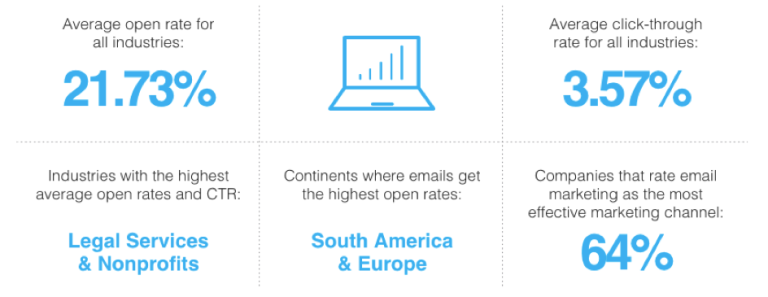
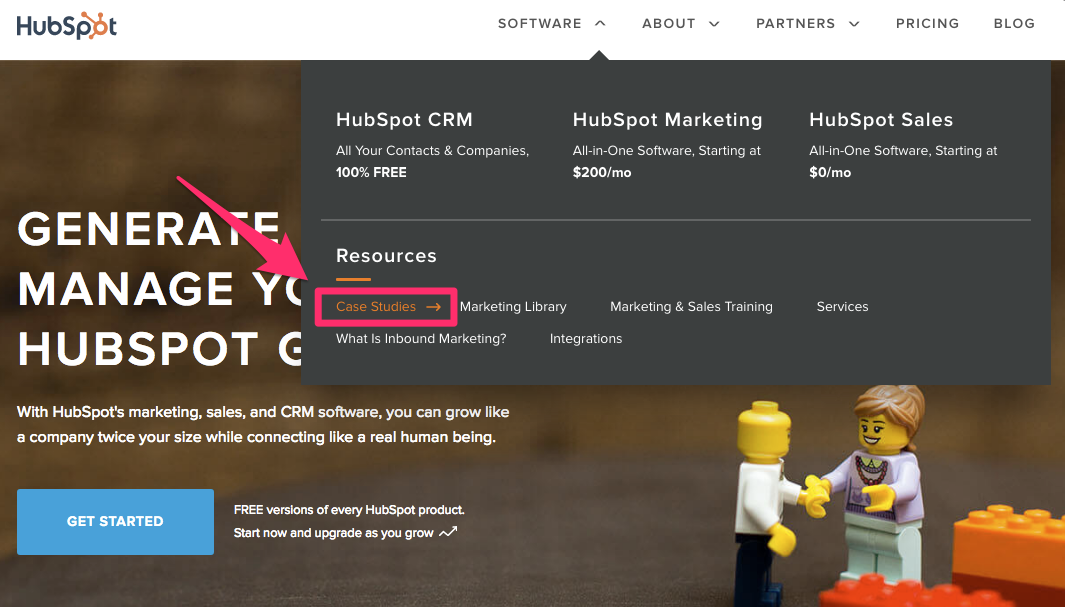
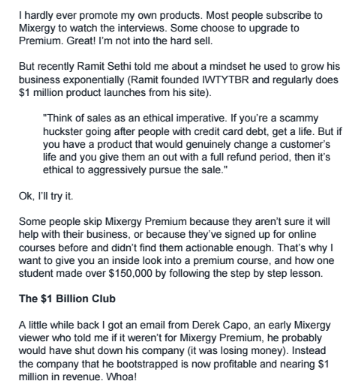
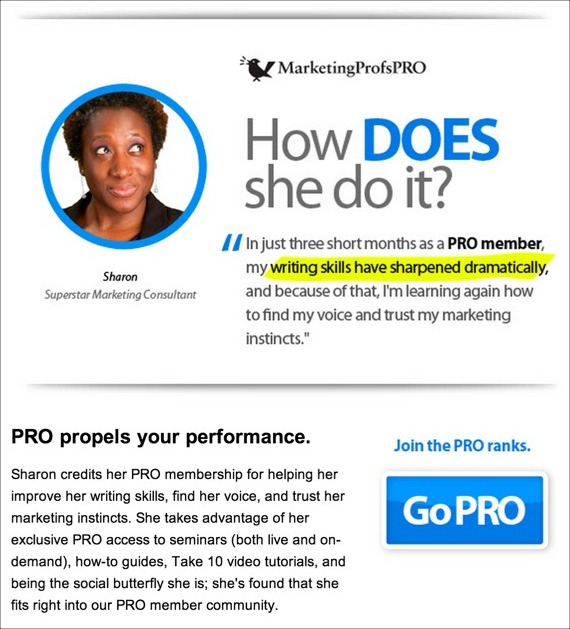
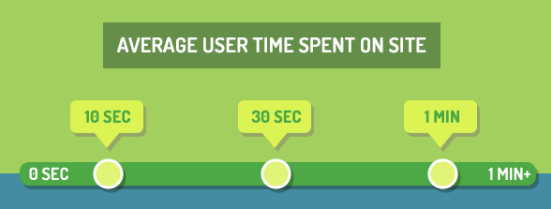
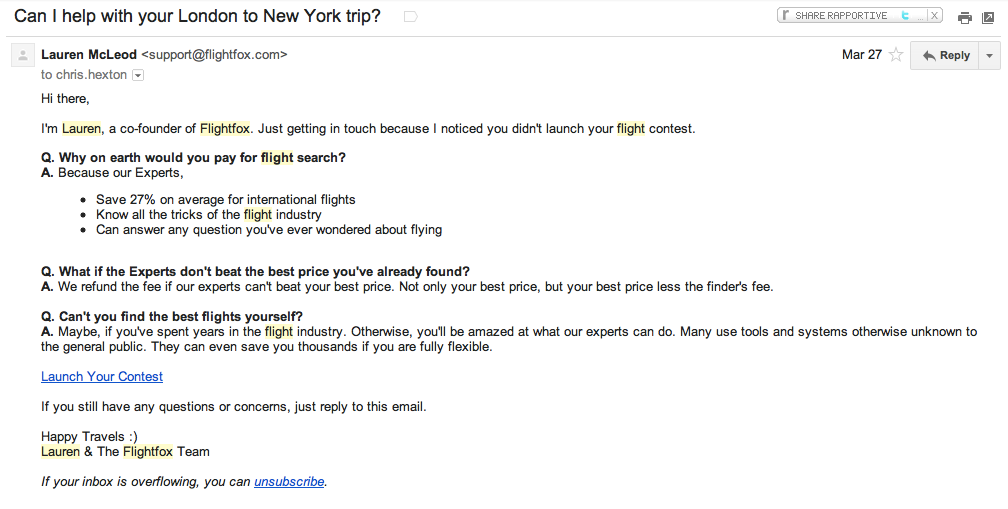
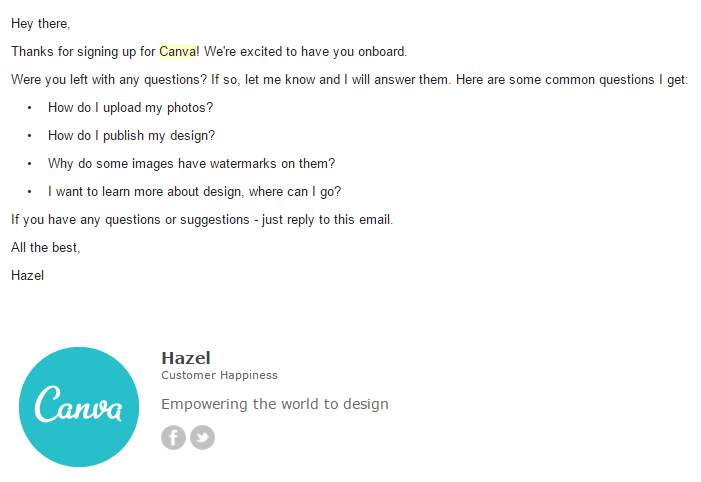
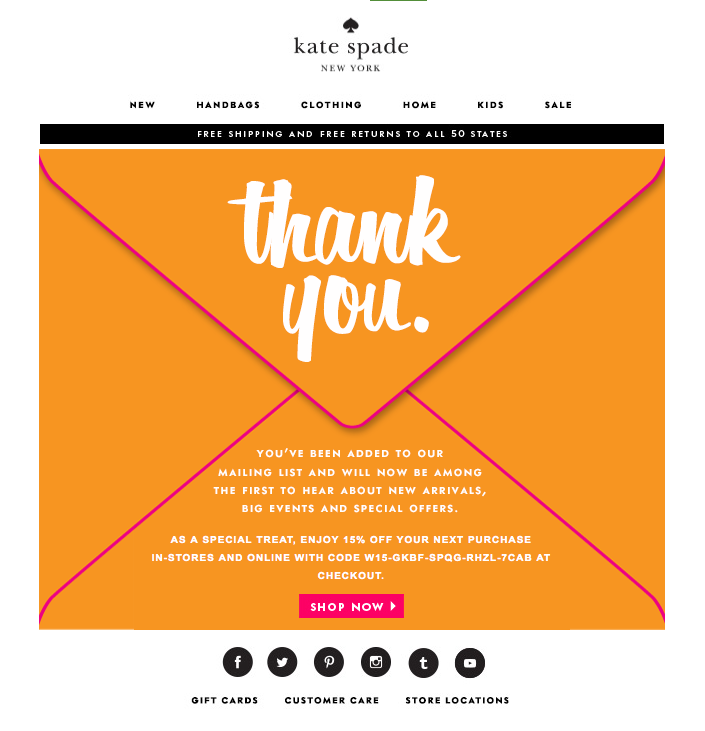
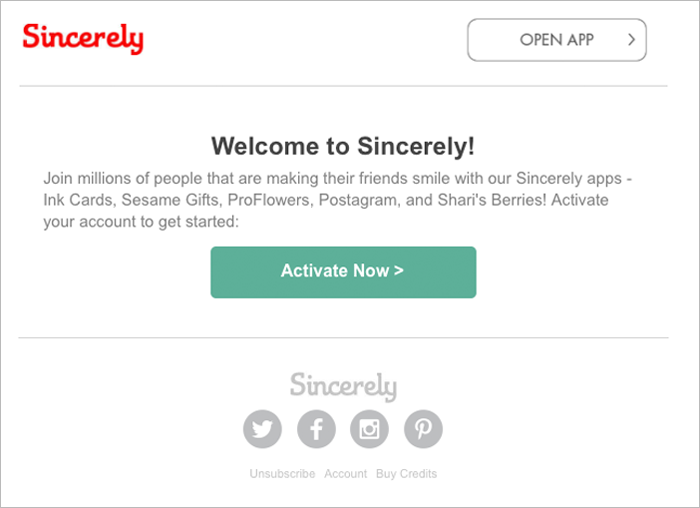
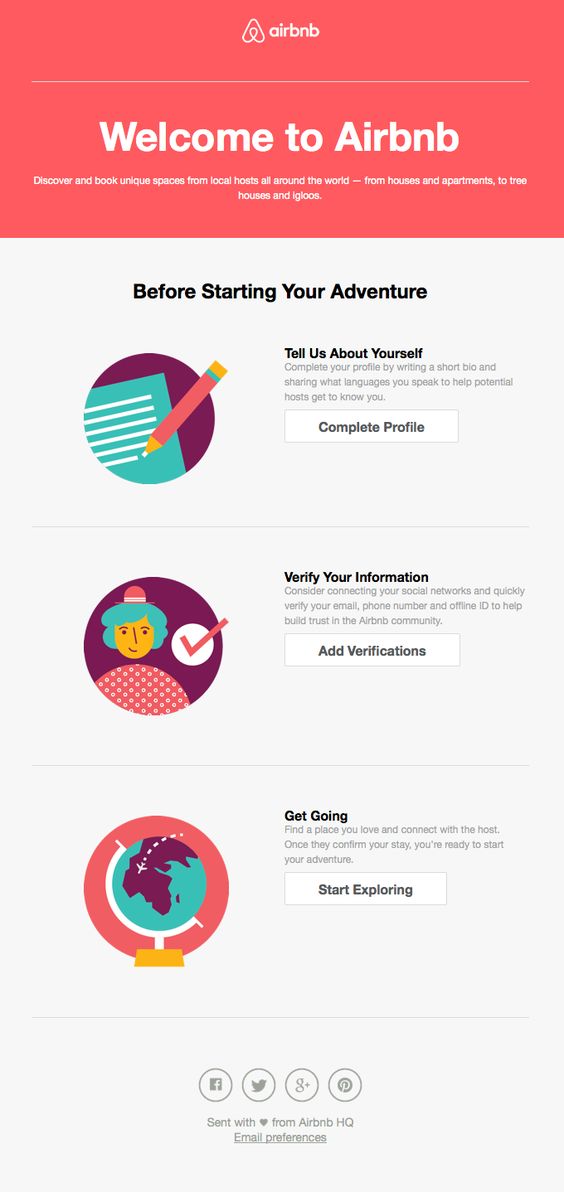
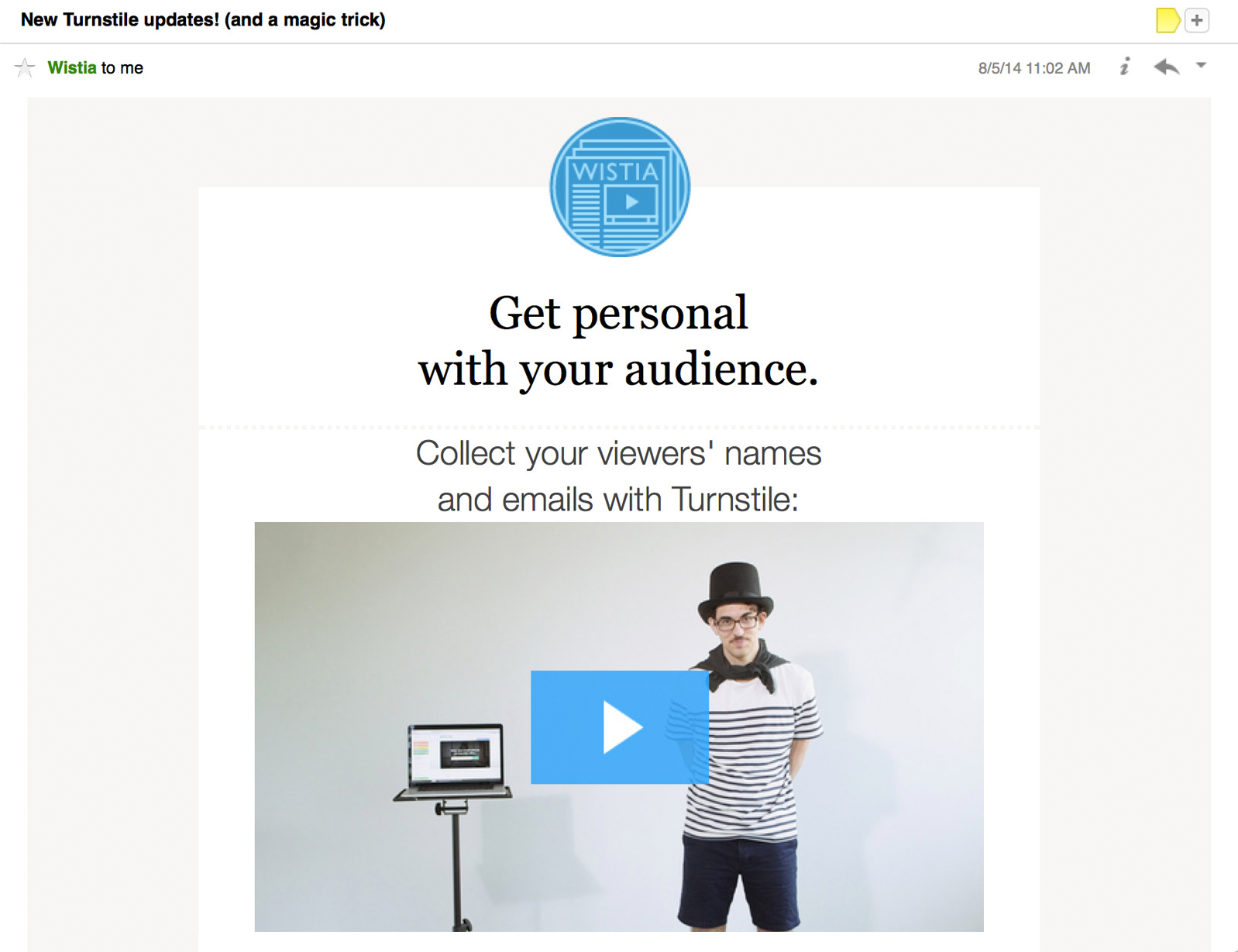
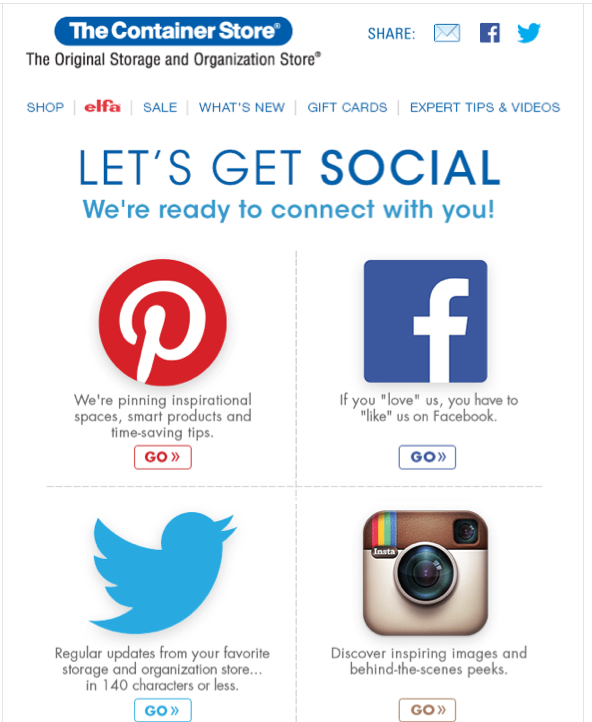
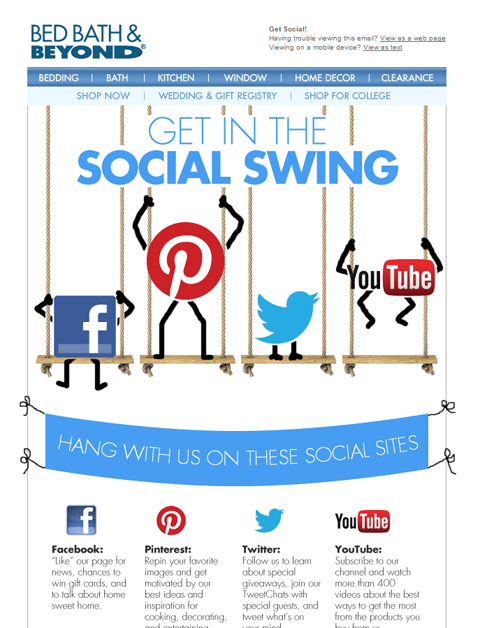
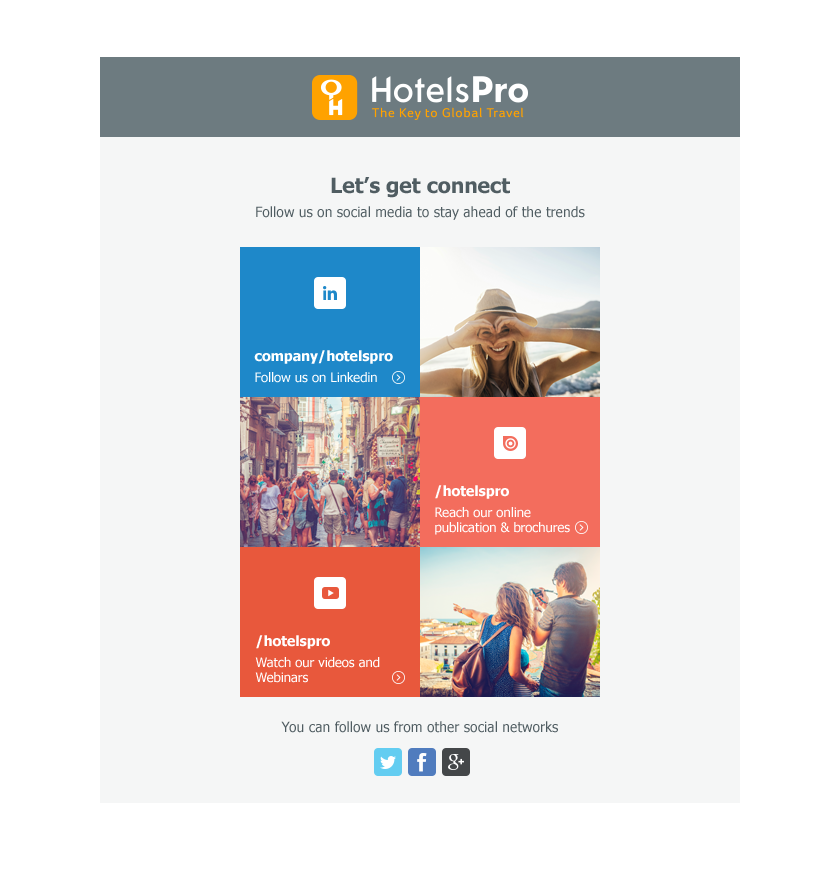

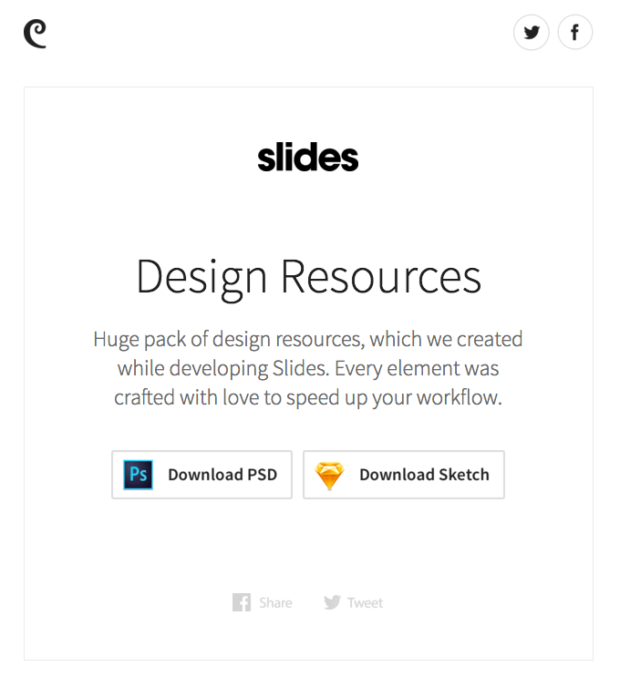

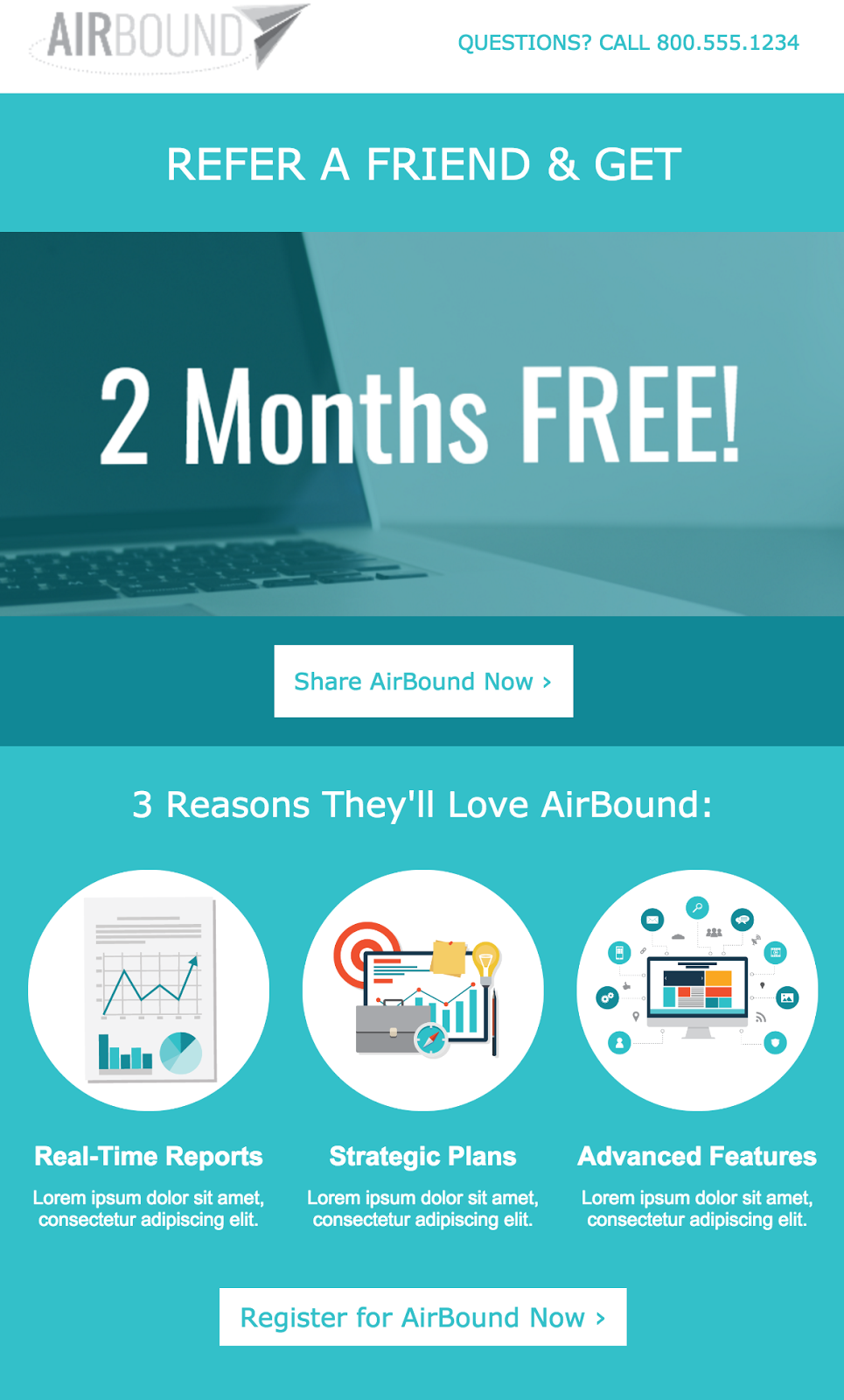
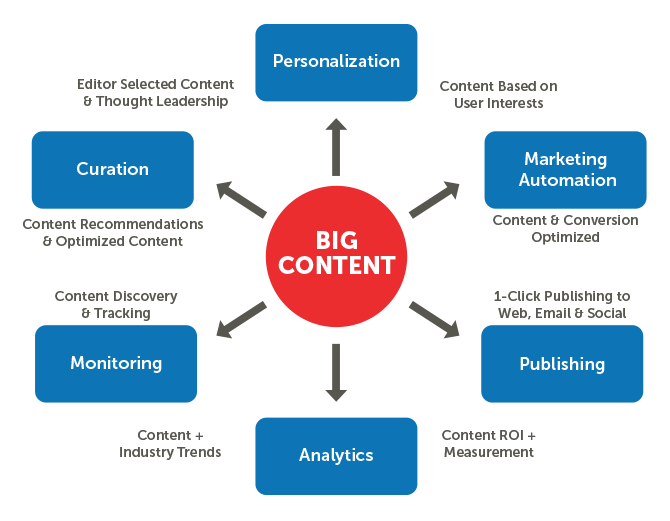
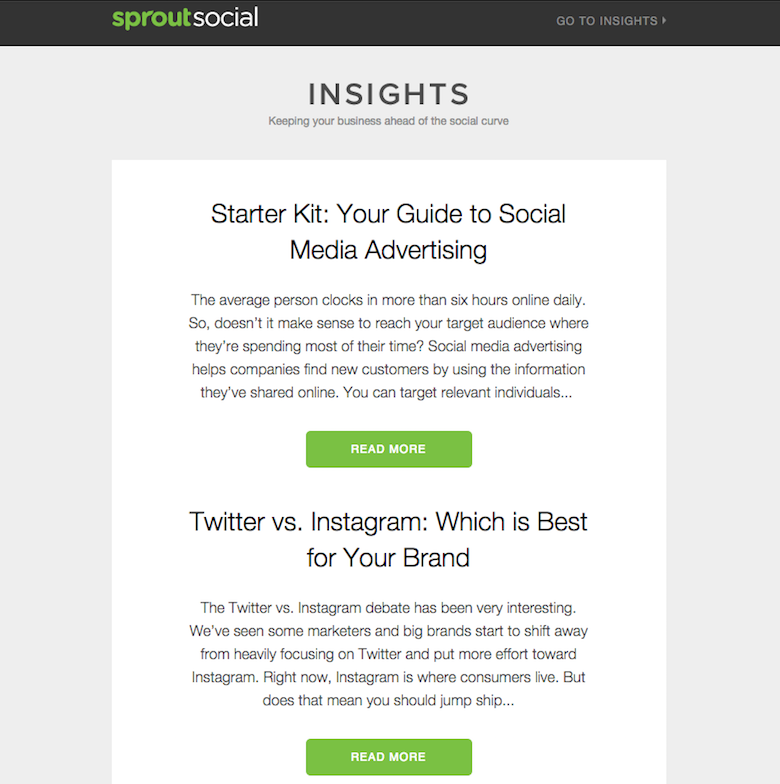
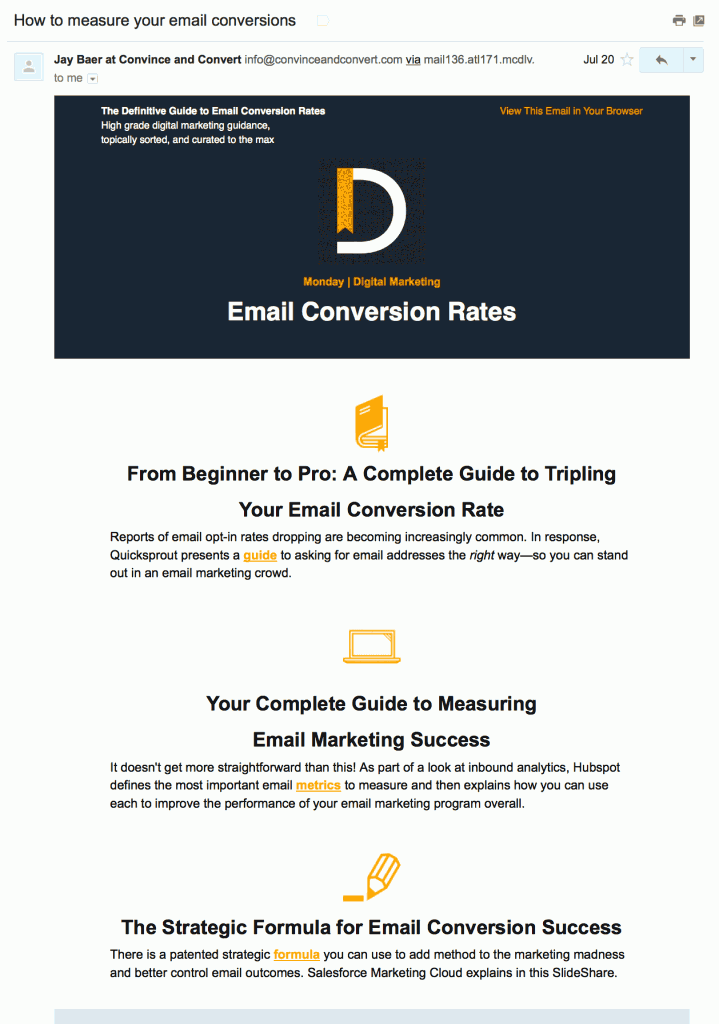
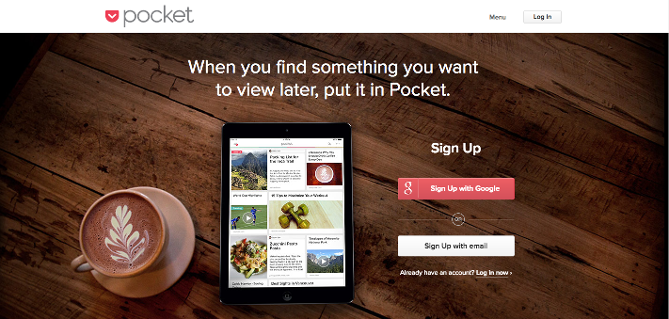
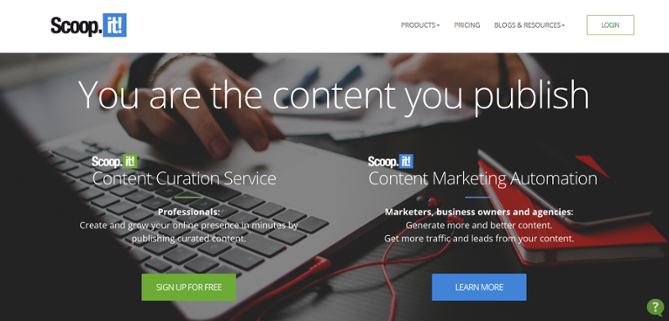
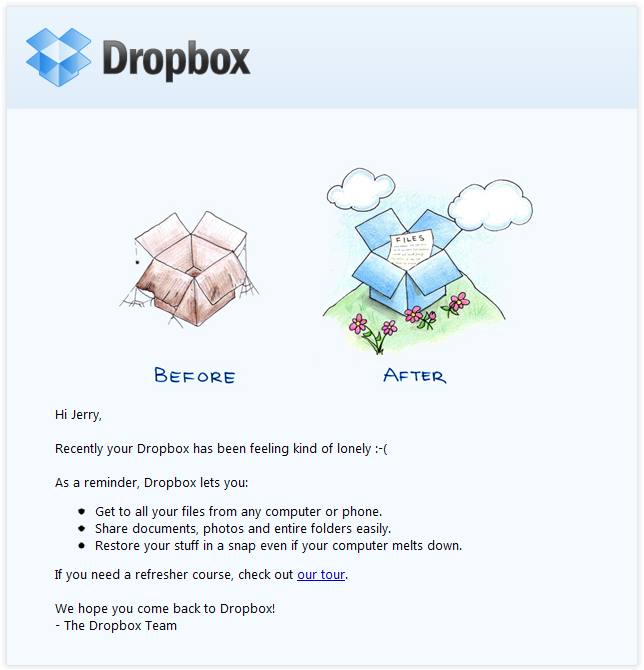
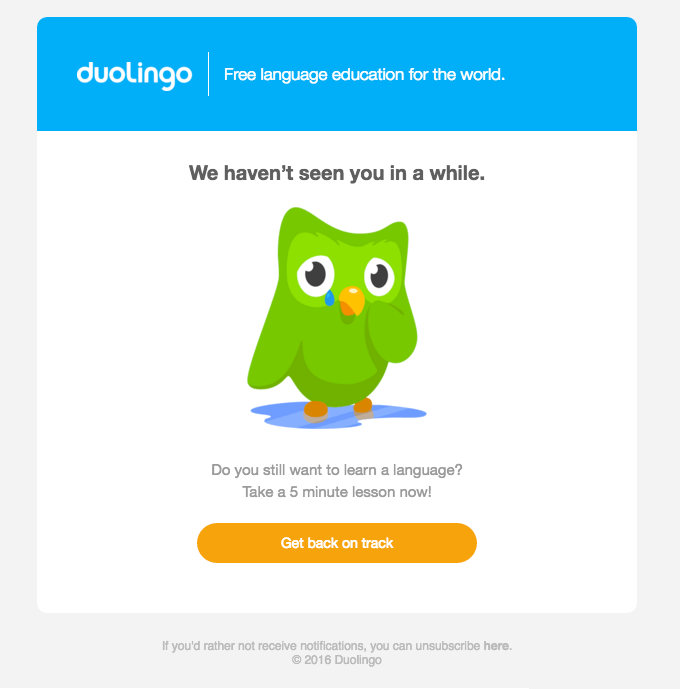
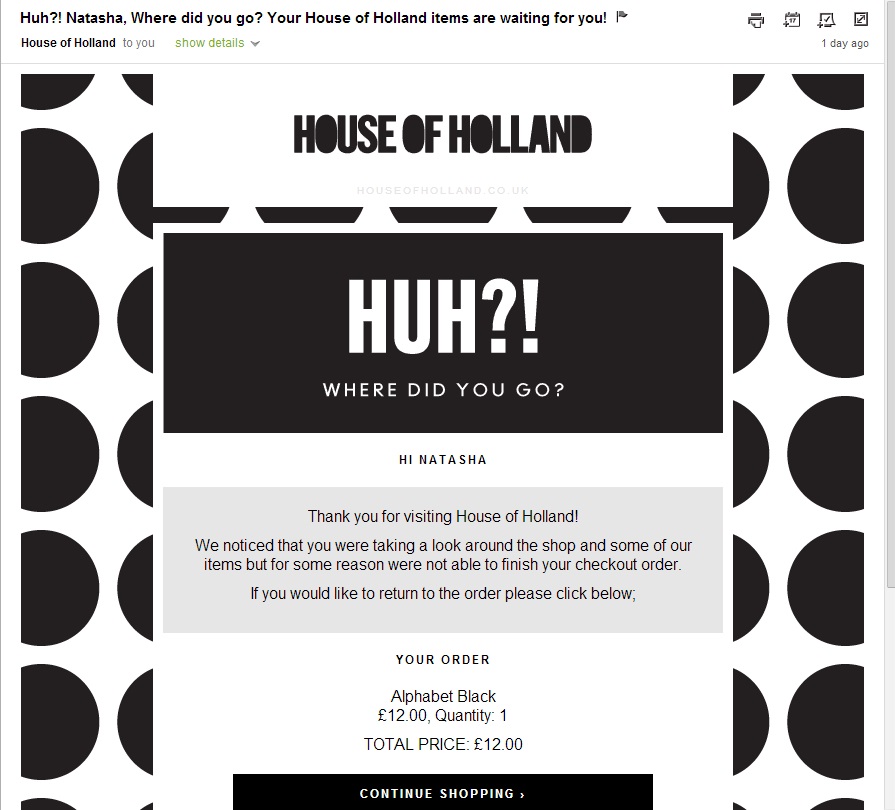
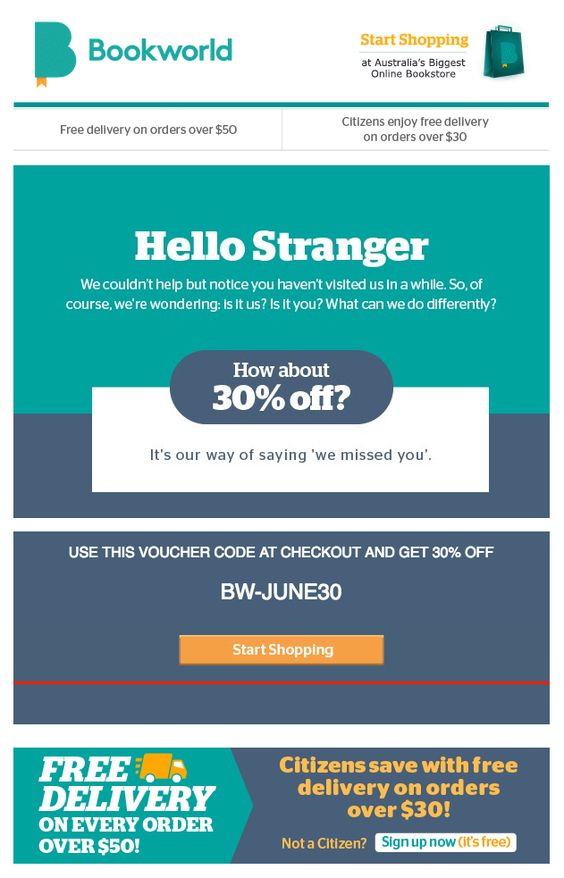
Comments (2)